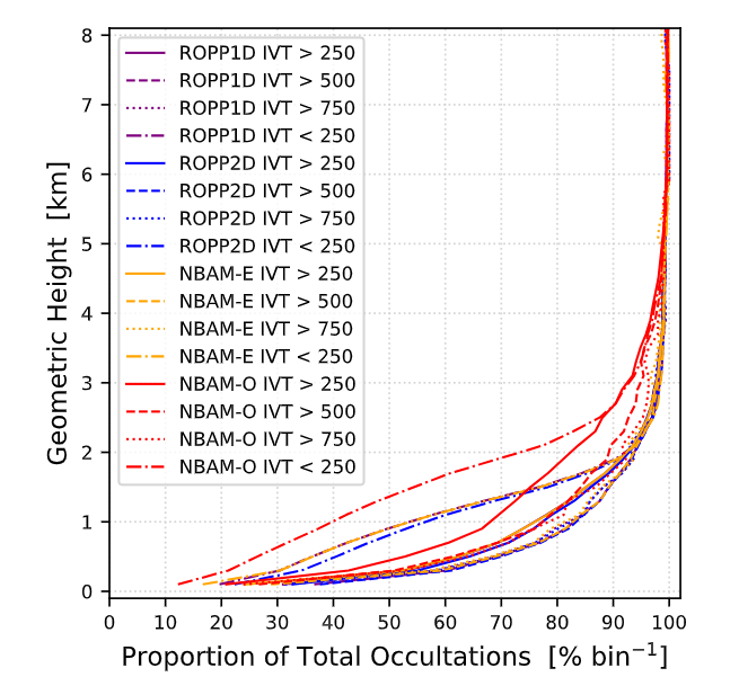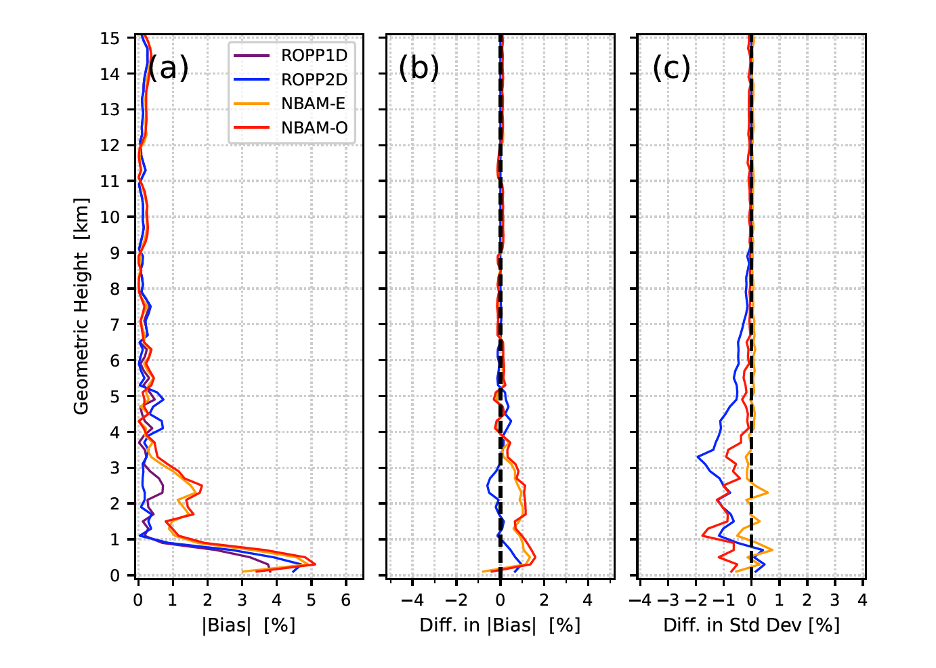CW3E Publication Notice
The Utility of a Two-dimensional Forward Model for Bending Angle Observations in Regions with Strong Horizontal Gradients
May 7, 2025
A paper titled “The Utility of a Two-dimensional Forward Model for Bending Angle Observations in Regions with Strong Horizontal Gradients” was published recently in the American Meteorological Society’s Monthly Weather Review. The study was authored by Michael Murphy (SIO, NASA Goddard Space Flight Center, and University of Maryland Baltimore County), Jennifer Haase (SIO, CW3E), Pawel Hordyniec (Institute of Geodesy and Geoinformatics, Wrocław University of Environmental and Life Sciences), Xingren Wu (NWS/NOAA National Center for Environmental Prediction), Colin Grudzien (CW3E), and Luca Delle Monache (CW3E).
Atmospheric rivers (ARs) transport low level moisture over the global oceans and often produce high-impact precipitation over coastal mountain ranges. CW3E collects data from the AR Recon program to help improve forecasts across the Western US. This study looks at new ways to help improve forecasts across the Western US. This study looks at new ways to improve the use of new measurements of low-level moisture in numerical weather model forecasting. These measurements come from Low Earth Orbiting Satellite Radio Occultation (RO), where satellites like COSMIC-2 track how radio signals bend as they pass through the atmosphere. They sample temperature and moisture along horizontal raypaths that have high vertical resolution, but provide an integral of atmospheric properties in the horizontal. To take full advantage of these observations, the operator that simulates the observations from model fields must consider the 2-dimensional (2D) variation of the atmospheric properties. Specifically, in the Northeast Pacific, the proportion of occultation observations that are retained in the modeling systems is higher when the simulation accounts for horizontal variations across the AR (Figure 1).
This study evaluates the advantages of using a 2D observation operator for these simulations. One highlight is that for RO observations within the AR (e.g., the 250 kg m-1 s-1 limits of horizontal moisture transport), the 2D operator is shown to perform better than the standard 1D operator (Figure 2). This effect increases with increasing AR intensity. As shown, the 2D operator (blue line) performs significantly better in the height range from 2.5 to 7 km than the other methods, in terms of standard deviation of the difference with the Global Forecast System (GFS) analysis. This demonstrates the potential to improve forecasting specifically in and around the highly variable structure of ARs.
Figure 1. A comparison of the penetration depth of RO data in terms of the proportion of profiles that extend down to a given geometric height. The figure also shows how RO observations are vertically distributed, expressed as the percentage of total profiles within each 200-meter layer of the atmosphere, for different integrated water vapor transport (IVT) levels. The IVT thresholds are indicated by different line dash patterns in the legend. Figure 10 from Murphy et al. (2025).
Figure 2. Comparison inside areas of intense atmospheric rivers (IVT ≥ 500 kg m−1 s−1) of (a) the absolute value of the bias of the innovations with respect to the GFS (%). The difference in the (b) absolute value of the bias of the innovations (%) and (c) the standard deviation of the innovations (%) with the ROPP1D experiment for each of the remaining numerical experiments is also shown. The NBAM-O (red lines), NBAM-E (orange lines), ROPP1D (purple lines) and ROPP2D (blue lines) experiments are indicated. The thick dashed black line highlights the line of zero difference in panels (c) and (d). Note that ROPP2D (blue line) is the only 2D operator experiment and it has significantly lower standard deviation than the 1D operators. Figure 15 from Murphy et al. (2025).
Murphy, M. J., Haase, J. S., Hordyniec, P., Wu, X., Grudzien, C., &. Delle Monache, L. (2025). The Utility of a Two-dimensional Forward Model for Bending Angle Observations in Regions with Strong Horizontal Gradients. Monthly Weather Review (published online ahead of print 2025). https://doi.org/10.1175/MWR-D-23-0268.1


